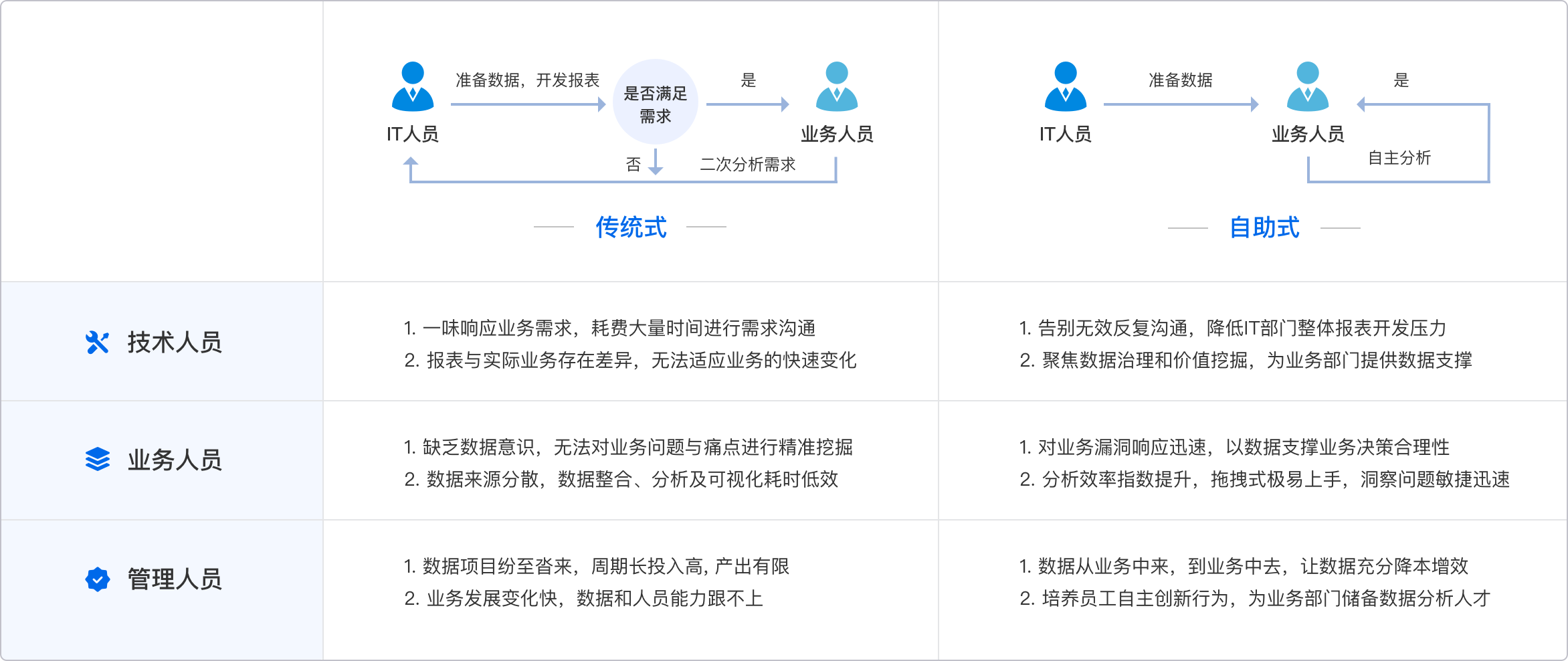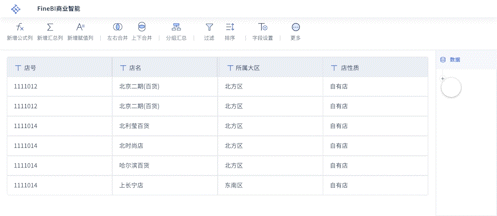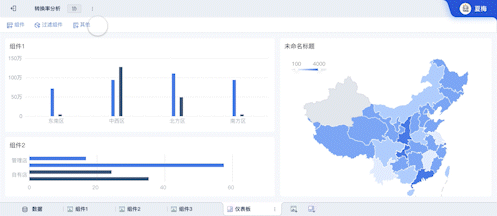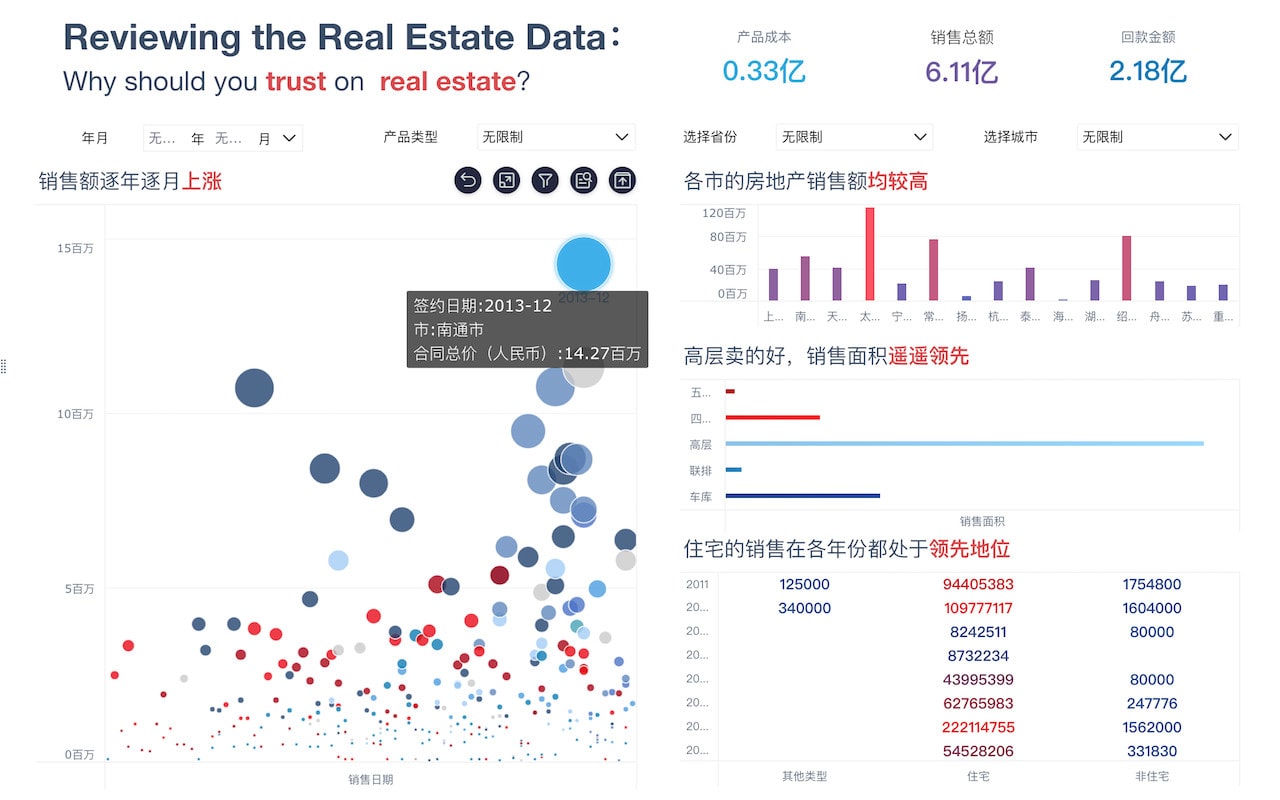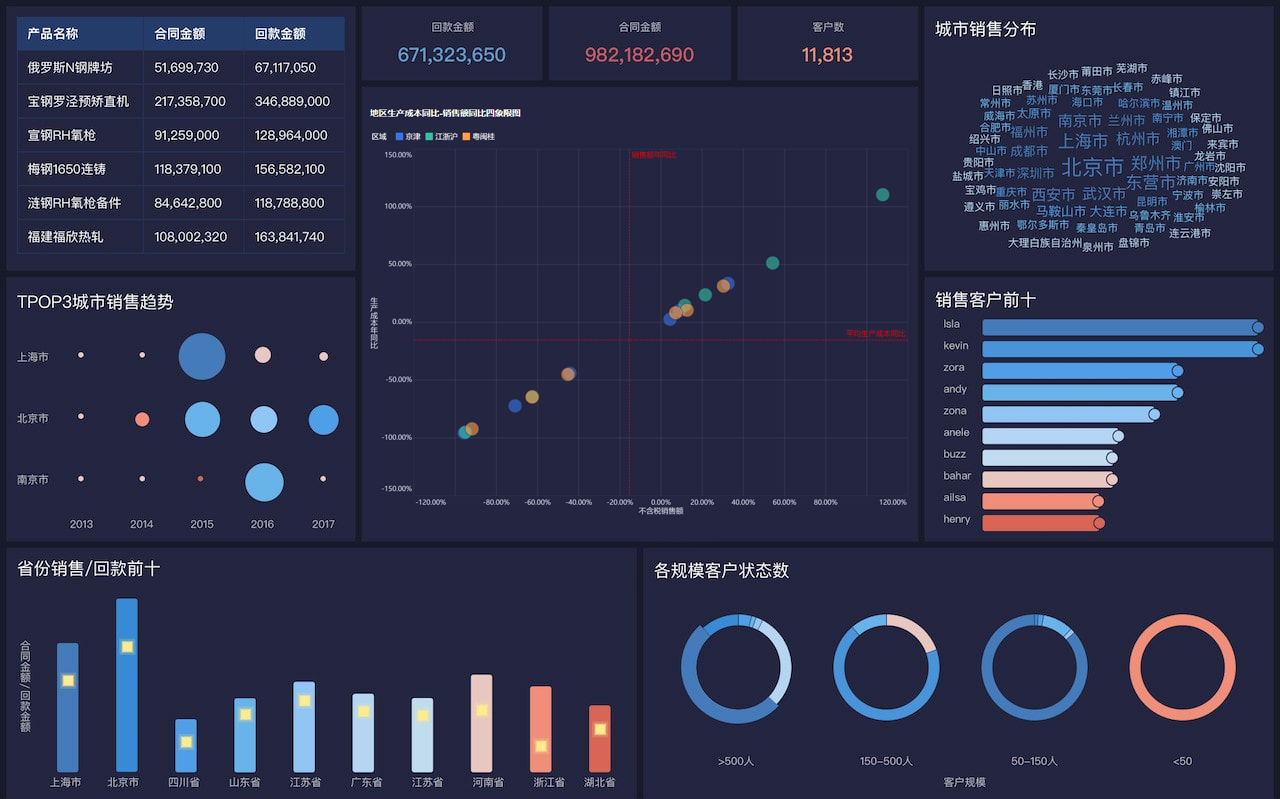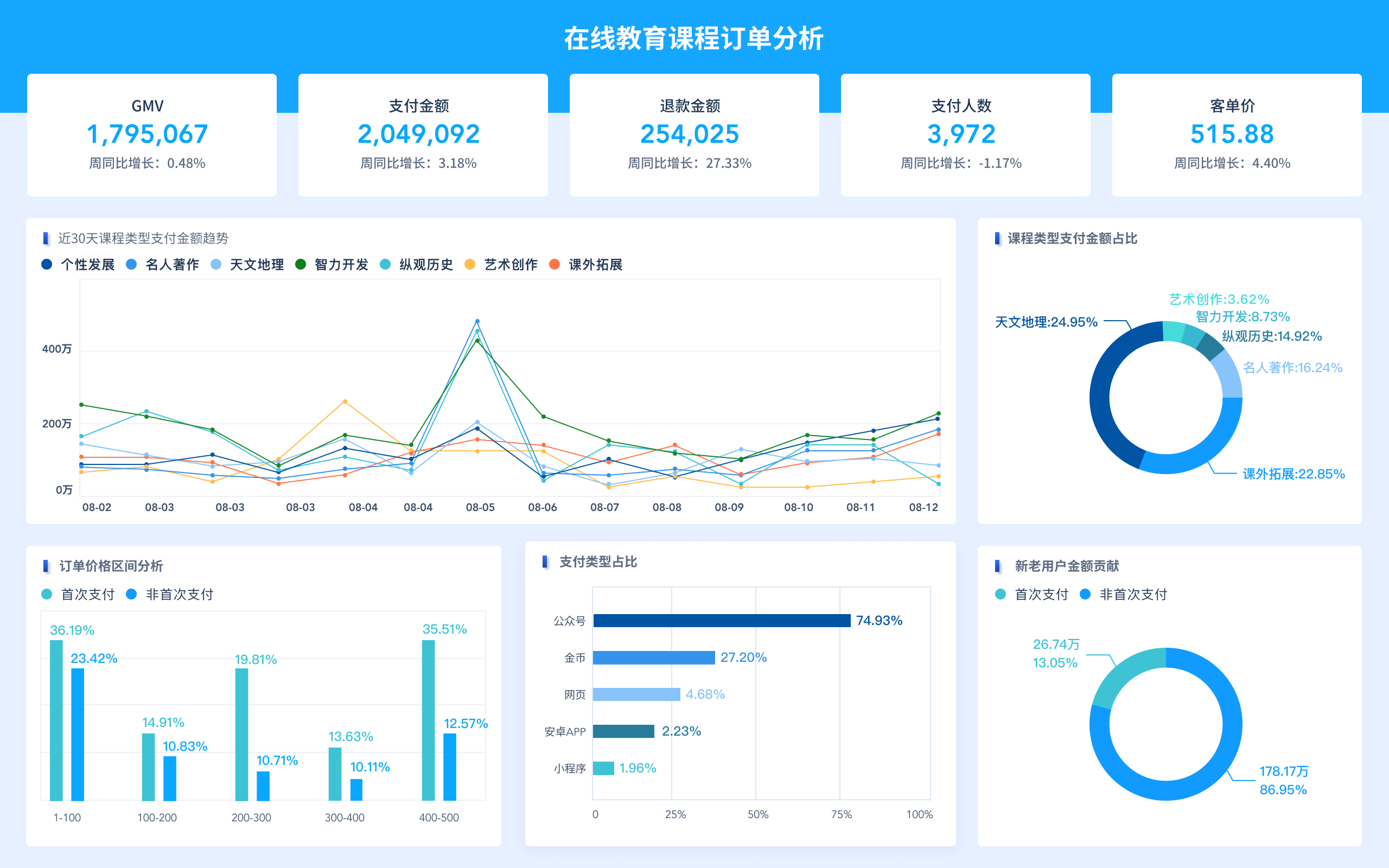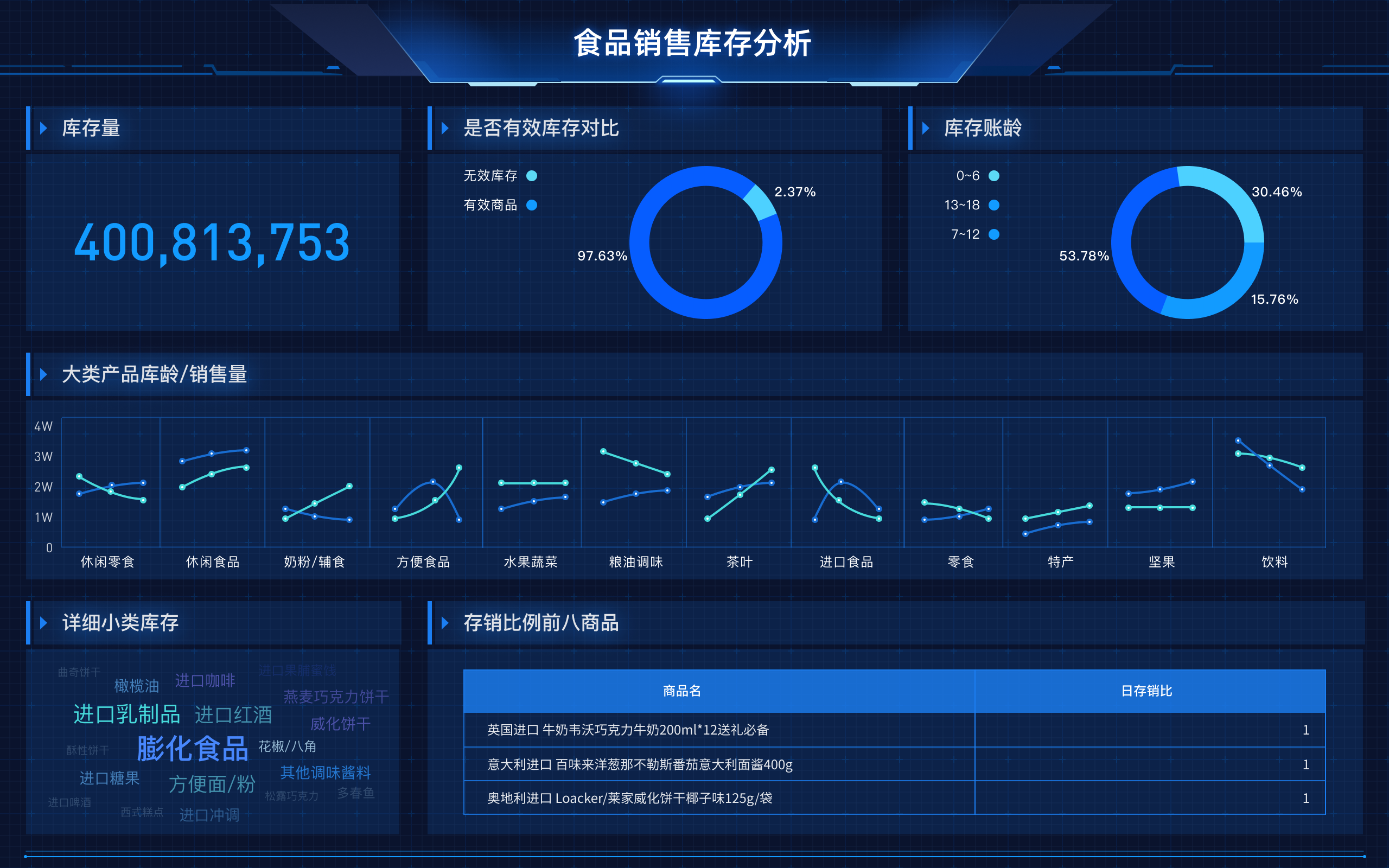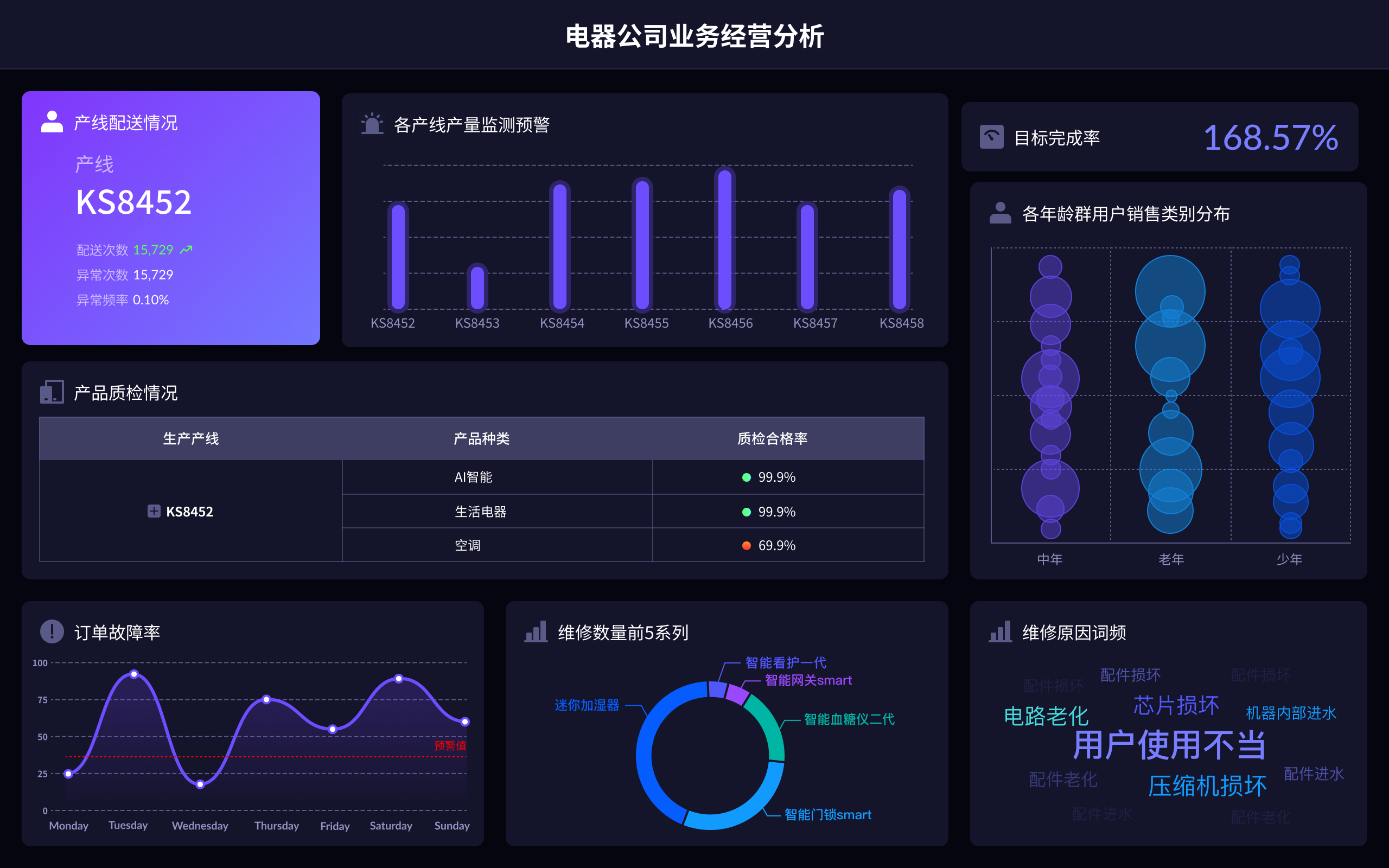
数据仓库的典型特点包括:面向主题、集成性、稳定性和时变性。面向主题是指数据仓库中的数据是按照特定的主题进行组织和存储的,例如客户、产品、销售等。集成性意味着数据来自多个不同的源系统,需要进行清洗和转换,以确保数据的一致性和准确性。稳定性表明数据在进入数据仓库后不再频繁改变,主要用于历史数据的分析和查询。时变性则是指数据仓库中的数据是随着时间的变化而不断积累的,能够反映出不同时间点的数据状态。面向主题是数据仓库的核心特点之一,它有助于更好地进行数据分析和决策支持。例如,企业可以通过分析不同时间段的销售数据,来制定更有效的市场策略和销售计划。
一、面向主题、主题导向的组织方式
数据仓库中的数据是按照特定的主题进行组织和存储的。每个主题通常代表一个业务领域,如客户、产品、销售等。这种组织方式有助于更好地进行数据分析和决策支持。面向主题的数据仓库允许用户从多个角度分析同一个主题,从而获得更全面和深入的洞察。例如,一个零售企业的数据仓库可能包括客户、产品和销售三个主要主题。通过分析不同时间段的销售数据,企业可以制定更有效的市场策略和销售计划。
二、集成性、统一的数据视图
数据仓库中的数据通常来自多个不同的源系统,如ERP系统、CRM系统、财务系统等。这些数据需要进行清洗、转换和集成,以确保数据的一致性和准确性。集成性是数据仓库的一个关键特点,它确保了来自不同系统的数据能够无缝地结合在一起,从而提供一个统一的数据视图。例如,一个企业可能有多个销售系统,每个系统中的数据格式和结构可能不同。通过数据仓库的集成功能,这些数据可以被转换为统一的格式,并存储在一个集中式的数据仓库中,便于进行综合分析。
三、稳定性、历史数据的保存
数据仓库中的数据在进入后不再频繁改变,主要用于历史数据的分析和查询。这种稳定性使得数据仓库成为一个可靠的数据存储和分析平台。稳定性确保了数据仓库中的数据具有高度的可靠性和准确性,从而支持各种复杂的查询和分析任务。例如,一个企业可以通过分析过去几年的销售数据,来识别长期的销售趋势和模式,从而制定更加有效的业务策略。
四、时变性、时间维度的数据积累
数据仓库中的数据是随着时间的变化而不断积累的,能够反映出不同时间点的数据状态。这种时变性使得数据仓库成为一个动态的数据存储和分析平台,能够支持各种时间维度的查询和分析。时变性允许用户对历史数据进行回溯分析,从而识别出各种时间维度的模式和趋势。例如,一个企业可以通过分析不同季度的销售数据,来制定更加精准的市场策略和销售计划。
五、数据清洗、数据质量保证
数据仓库中的数据在进入后需要经过严格的数据清洗过程,以确保数据的高质量和一致性。数据清洗通常包括数据去重、数据转换、数据校验等步骤。数据清洗是数据仓库建设中的一个重要环节,直接影响到数据分析的准确性和可靠性。例如,一个企业在建设数据仓库时,可能需要对来自不同系统的客户数据进行清洗,以去除重复记录和错误数据,从而确保数据的高质量。
六、高性能、高效的数据查询和分析
数据仓库设计的一个重要目标是支持高性能的数据查询和分析。通过采用各种优化技术,如索引、分区、并行处理等,数据仓库能够实现高效的数据存储和查询性能。高性能的数据仓库能够支持各种复杂的查询和分析任务,从而满足企业的多样化需求。例如,一个企业的数据仓库可能需要支持数百万条记录的查询和分析,通过采用索引和并行处理等技术,可以显著提高查询性能,缩短查询时间。
七、可扩展性、支持数据量的增长
数据仓库设计时需要考虑到未来数据量的增长,因此具有良好的可扩展性是一个重要特点。可扩展性确保数据仓库能够随着数据量的增加而进行扩展,从而满足企业不断增长的数据存储和分析需求。例如,一个企业的数据仓库在最初设计时可能只需要支持几百万条记录,但随着业务的发展,数据量可能会迅速增长到数亿条记录。通过采用分布式存储和计算等技术,数据仓库可以轻松扩展,以应对不断增长的数据量。
八、安全性、数据保护和访问控制
数据仓库中的数据通常涉及到企业的核心业务数据,因此数据的安全性是一个非常重要的特点。数据仓库需要采用各种安全措施,如数据加密、访问控制、审计等,以确保数据的机密性、完整性和可用性。例如,一个企业的数据仓库可能存储了大量的客户信息和交易数据,这些数据如果泄露,将对企业造成重大损失。通过采用数据加密和访问控制等措施,可以有效保护数据的安全。
九、数据建模、数据仓库的设计基础
数据建模是数据仓库设计的基础,它决定了数据仓库的结构和性能。数据建模通常包括概念模型、逻辑模型和物理模型等多个阶段。通过合理的数据建模,可以确保数据仓库具有良好的性能和可扩展性。例如,一个企业在设计数据仓库时,可能需要对不同业务领域的数据进行建模,以确保数据的高效存储和查询性能。
十、ETL过程、数据抽取、转换和加载
ETL(Extract, Transform, Load)过程是数据仓库建设中的一个关键环节。ETL过程包括数据的抽取、转换和加载,通过ETL过程,可以将来自不同源系统的数据抽取出来,进行清洗和转换,然后加载到数据仓库中。ETL过程的高效性和可靠性直接影响到数据仓库的性能和数据质量。例如,一个企业在建设数据仓库时,可能需要从多个不同的源系统中抽取数据,然后进行复杂的数据转换和清洗,最终加载到数据仓库中,以确保数据的一致性和准确性。
十一、OLAP、多维数据分析
OLAP(Online Analytical Processing)是数据仓库中的一个重要功能,支持多维数据分析。通过OLAP,可以从不同的维度对数据进行切片和旋转,进行复杂的数据分析和查询。OLAP功能使得数据仓库成为一个强大的数据分析平台,能够支持各种复杂的分析需求。例如,一个企业可以通过OLAP功能,从不同的维度(如时间、地区、产品等)对销售数据进行分析,从而获得更加深入的洞察。
十二、元数据管理、数据仓库的核心
元数据是描述数据的数据,它在数据仓库中的作用非常重要。元数据管理包括元数据的收集、存储、维护和使用,通过元数据管理,可以更好地理解和管理数据仓库中的数据。元数据管理是数据仓库的核心,它确保了数据的高效管理和使用。例如,一个企业的数据仓库可能包含大量的元数据,包括数据表、字段、索引等信息,通过元数据管理,可以更好地理解和管理这些数据,从而提高数据仓库的效率和性能。
十三、数据挖掘、深度数据分析
数据挖掘是数据仓库中的一个高级功能,通过数据挖掘,可以从大量的数据中发现隐藏的模式和知识。数据挖掘技术包括分类、聚类、关联分析等,通过数据挖掘,可以进行深度的数据分析和预测。数据挖掘使得数据仓库成为一个强大的数据分析平台,能够支持各种复杂的分析需求。例如,一个企业可以通过数据挖掘技术,从销售数据中发现客户的购买模式,从而制定更加精准的市场策略。
十四、数据可视化、直观的数据展示
数据可视化是数据仓库中的一个重要功能,通过数据可视化,可以将复杂的数据以直观的图形和图表形式展示出来,便于用户进行理解和分析。数据可视化技术包括饼图、柱状图、折线图等,通过数据可视化,可以更好地进行数据分析和决策支持。例如,一个企业可以通过数据可视化,将销售数据以图表的形式展示出来,便于管理层进行快速的决策和分析。
十五、实时数据处理、实时数据分析
实时数据处理是数据仓库中的一个高级功能,通过实时数据处理,可以对实时数据进行快速的处理和分析。实时数据处理技术包括流数据处理、实时查询等,通过实时数据处理,可以进行实时的数据分析和决策支持。实时数据处理使得数据仓库成为一个动态的数据分析平台,能够支持各种实时的分析需求。例如,一个企业可以通过实时数据处理技术,对实时销售数据进行分析,从而快速调整市场策略和销售计划。
十六、数据仓库自动化、提高效率和准确性
数据仓库自动化是指通过自动化工具和技术,提高数据仓库建设和维护的效率和准确性。数据仓库自动化技术包括ETL自动化、数据建模自动化、元数据管理自动化等,通过数据仓库自动化,可以显著提高数据仓库的效率和性能。例如,一个企业可以通过ETL自动化工具,自动进行数据抽取、转换和加载,从而减少人工干预,提高数据仓库的效率和准确性。
十七、数据质量管理、确保数据准确性和一致性
数据质量管理是数据仓库建设中的一个重要环节,通过数据质量管理,可以确保数据的准确性和一致性。数据质量管理包括数据清洗、数据校验、数据监控等,通过数据质量管理,可以提高数据的可靠性和准确性。数据质量管理是数据仓库的核心,它确保了数据的高质量和一致性。例如,一个企业在建设数据仓库时,可能需要进行严格的数据质量管理,以确保数据的准确性和一致性,从而支持各种复杂的查询和分析任务。
十八、数据仓库的生命周期管理、全流程管理
数据仓库的生命周期管理是指对数据仓库的整个生命周期进行管理,包括需求分析、设计、建设、维护和更新等。数据仓库的生命周期管理确保了数据仓库的高效运行和持续改进。生命周期管理是数据仓库建设中的一个重要环节,它确保了数据仓库的高效性和可持续性。例如,一个企业在建设数据仓库时,可能需要进行全面的生命周期管理,以确保数据仓库的高效运行和持续改进,从而支持企业的长期发展。
十九、数据治理、数据仓库的管理框架
数据治理是数据仓库中的一个重要管理框架,通过数据治理,可以对数据进行全面的管理和控制。数据治理包括数据标准化、数据安全、数据质量管理等,通过数据治理,可以提高数据的管理水平和使用效率。数据治理是数据仓库的核心,它确保了数据的高效管理和使用。例如,一个企业在建设数据仓库时,可能需要进行全面的数据治理,以确保数据的高质量和高效管理,从而支持企业的长期发展。
二十、数据仓库的成本管理、优化资源利用
数据仓库的成本管理是指通过各种技术和措施,优化数据仓库的资源利用,降低建设和维护成本。成本管理包括硬件成本、软件成本、人工成本等,通过成本管理,可以提高数据仓库的经济效益。成本管理是数据仓库建设中的一个重要环节,它确保了数据仓库的高效运行和资源的优化利用。例如,一个企业在建设数据仓库时,可能需要进行全面的成本管理,以降低建设和维护成本,从而提高数据仓库的经济效益。
通过以上多个方面的详细描述,可以看出数据仓库的典型特点是多方面的,每一个特点都有其独特的作用和意义。数据仓库的建设和管理是一个复杂而系统的工程,需要综合考虑多个方面的因素,以确保数据仓库的高效性、可靠性和可扩展性。
相关问答FAQs:
What are the typical characteristics of a data warehouse?
A data warehouse is a centralized repository designed to store, manage, and analyze large volumes of structured and unstructured data from various sources. It serves as a critical component for business intelligence and analytics. Here are some of the key characteristics of a data warehouse:
-
Subject-Oriented: Data warehouses are organized around key subjects or business areas, such as sales, finance, or customer information. This organization allows for easier reporting and analysis because the data is grouped in a way that reflects business needs.
-
Integrated: Data warehouses integrate data from multiple sources, which may include relational databases, operational databases, and external data sources. This integration ensures consistency and provides a unified view of the data, making it easier for users to access and analyze information.
-
Time-Variant: Data warehouses store historical data, allowing users to analyze trends and changes over time. This time-variant nature means that data is not just current but also includes historical records that can be used for reporting and forecasting.
-
Non-Volatile: Once data is entered into a data warehouse, it is not typically changed or deleted. This non-volatile characteristic ensures that the data remains stable and reliable for analysis, providing a consistent view of information over time.
-
Optimized for Query Performance: Data warehouses are designed to support complex queries and analysis. They often use specialized data models, such as star or snowflake schemas, to optimize query performance and improve response times for users accessing large datasets.
-
Supports Data Mining and Analytics: Data warehouses provide a foundation for advanced analytics and data mining. With historical and integrated data, organizations can apply various analytical techniques to uncover insights, trends, and patterns that inform strategic decision-making.
-
Scalability: A data warehouse can grow with an organization’s needs. As data volumes increase, a well-designed data warehouse architecture can scale to accommodate more data without sacrificing performance.
-
User Accessibility: Data warehouses are designed to be user-friendly, enabling non-technical users to access and analyze data easily. This accessibility is often achieved through business intelligence tools that provide intuitive interfaces for querying and visualizing data.
-
Data Quality and Consistency: Data warehouses typically include processes for data cleansing and transformation, ensuring that the data is accurate and consistent. High data quality is crucial for reliable reporting and analysis.
-
Support for ETL Processes: Data warehouses rely on Extract, Transform, Load (ETL) processes to gather data from various sources, transform it into a suitable format, and load it into the warehouse. This process is essential for maintaining the integrity and usability of the data stored within.
How does a data warehouse differ from a traditional database?
Understanding the distinctions between a data warehouse and a traditional database is essential for organizations looking to leverage their data effectively. Here are some of the primary differences:
-
Purpose: Traditional databases are optimized for transaction processing (OLTP), focusing on efficiently executing read and write operations. In contrast, data warehouses are designed for analytical processing (OLAP), where the emphasis is on read operations and complex queries that require aggregating large volumes of data.
-
Data Structure: Traditional databases often use normalized data structures to reduce redundancy and improve data integrity. Data warehouses, on the other hand, commonly utilize denormalized structures, such as star and snowflake schemas, to enhance query performance and simplify data retrieval.
-
Data Volume: Data warehouses are capable of handling significantly larger volumes of data compared to traditional databases. They are built to store and manage data from various sources over time, while traditional databases typically handle current data with shorter retention periods.
-
Data Update Frequency: Traditional databases are frequently updated with real-time transactions, reflecting the current state of the data. Data warehouses, however, are updated less frequently, often through scheduled ETL processes that load data in batches.
-
User Base: The users of traditional databases are often operational staff who perform day-to-day transactions. In contrast, data warehouses are utilized primarily by analysts and decision-makers who require insights and reports based on historical data.
-
Query Complexity: Queries executed against traditional databases tend to be simpler and focused on specific transactions. Data warehouse queries are often more complex and involve aggregating data across multiple dimensions, requiring advanced analytical capabilities.
-
Performance Optimization: While traditional databases prioritize transaction speed, data warehouses are optimized for query performance, often utilizing indexing, partitioning, and materialized views to improve response times for large queries.
-
Data Integration: Data warehouses integrate data from multiple heterogeneous sources, providing a comprehensive view of the organization’s data. Traditional databases typically operate in isolation, handling data specific to a single application or system.
-
Historical Data Storage: Data warehouses retain historical data for long-term analysis, while traditional databases usually maintain only current data, with historical records being less emphasized.
-
Reporting and Analysis: Data warehouses are tailored for reporting and analytics, providing tools and capabilities to support business intelligence initiatives. Traditional databases are not primarily designed for extensive reporting or analytical functions.
What are the common challenges faced when implementing a data warehouse?
Implementing a data warehouse can offer significant benefits, but organizations often encounter several challenges in the process. Here are some of the most common obstacles:
-
Data Quality Issues: One of the primary challenges is ensuring high data quality. Inconsistent, inaccurate, or incomplete data can lead to unreliable analytics and insights. Organizations must invest in data cleansing and validation processes to address these issues.
-
Integration of Diverse Data Sources: Organizations often have data spread across various systems and formats. Integrating these diverse data sources into a cohesive data warehouse can be complex and time-consuming, requiring careful planning and execution.
-
Choosing the Right Technology: With numerous data warehousing solutions available, selecting the appropriate technology can be daunting. Factors such as scalability, performance, cost, and compatibility with existing systems must be considered to make an informed decision.
-
Resource Constraints: Implementing a data warehouse requires significant resources, including time, budget, and skilled personnel. Organizations may face challenges in securing the necessary resources, particularly if they lack expertise in data warehousing.
-
Change Management: Transitioning to a data warehouse often involves changes to business processes and user workflows. Resistance to change from employees accustomed to existing systems can hinder the successful adoption of the new data warehouse.
-
ETL Process Complexity: The Extract, Transform, Load (ETL) process is critical for populating the data warehouse. Designing and managing efficient ETL workflows can be challenging, especially when dealing with large volumes of data and complex transformations.
-
Performance Optimization: As data volume grows, ensuring optimal performance can become increasingly difficult. Organizations must continuously monitor and fine-tune their data warehouse to maintain query performance and responsiveness.
-
Security and Compliance: Protecting sensitive data within the data warehouse while ensuring compliance with regulations (such as GDPR or HIPAA) can pose challenges. Organizations must implement robust security measures and access controls to safeguard data.
-
User Training and Adoption: Ensuring that end-users can effectively utilize the data warehouse is crucial for its success. Organizations may need to invest in training programs to help users become proficient in accessing and analyzing the data.
-
Scalability Concerns: As organizations grow and data volumes increase, scalability becomes a vital consideration. Designing a data warehouse that can accommodate future growth without significant redesign or performance degradation is essential.
By addressing these challenges proactively, organizations can enhance the chances of successful data warehouse implementation, ultimately leading to improved decision-making and business outcomes.
本文内容通过AI工具匹配关键字智能整合而成,仅供参考,帆软不对内容的真实、准确或完整作任何形式的承诺。具体产品功能请以帆软官方帮助文档为准,或联系您的对接销售进行咨询。如有其他问题,您可以通过联系blog@fanruan.com进行反馈,帆软收到您的反馈后将及时答复和处理。


